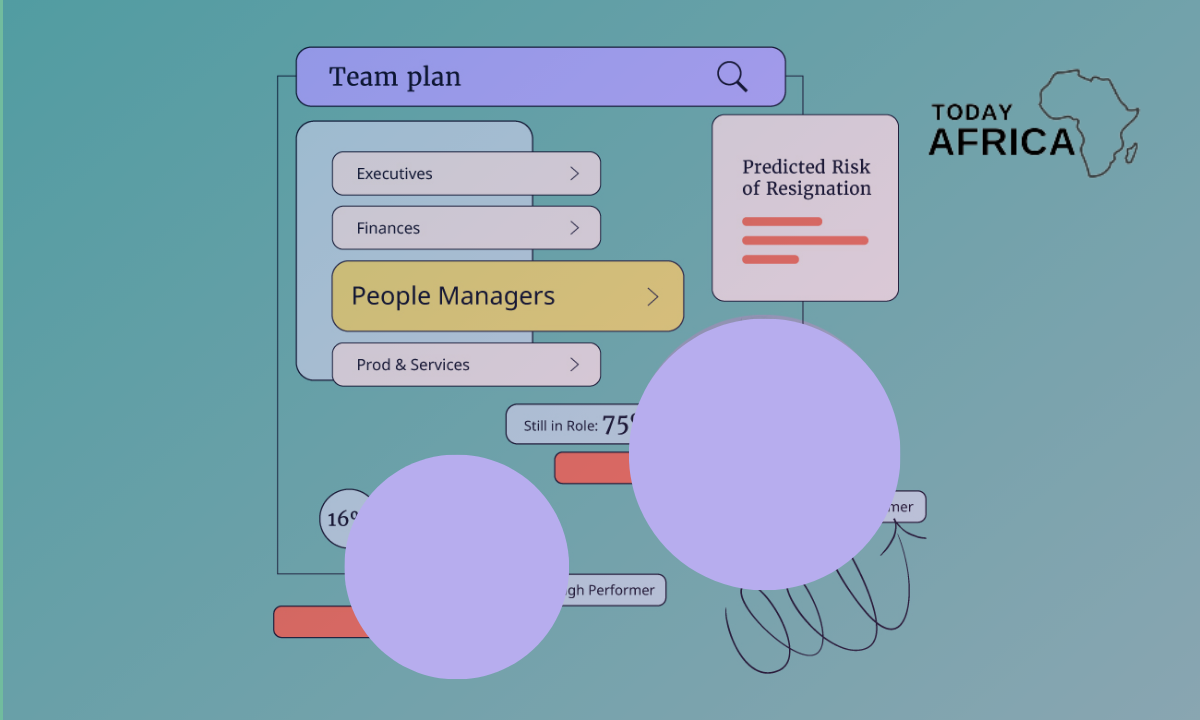In this article, we’ll discuss what is startup revenue by breaking down the concept, then explore various revenue models, strategies to boost revenue, and highlight key metrics that every entrepreneur should track.
What is Startup Revenue?
Startup revenue refers to the total income that a startup generates from its business operations over a given period. Unlike established companies, startups often experience significant volatility in revenue streams, especially in the early stages.
Revenue can come from various sources—sales of products or services, subscriptions, licensing fees, advertising, or even innovative models like freemium offerings.
For startups, revenue isn’t just a number on a balance sheet—it’s a vital indicator of market traction, product–market fit, and the business’s overall health. Investors and founders alike pay close attention to revenue growth, as it demonstrates that customers are willing to pay for the value the startup offers.
Different Revenue Models for Startups
A revenue model is a framework for generating income. For startups, selecting the right revenue model can make the difference between rapid growth and stagnation
1. Sales revenue model: This is the most straightforward model. A startup sells a product or service directly to customers and earns revenue per transaction. It’s common in e-commerce and retail startups.
2. Subscription revenue model: Startups charge customers a recurring fee—monthly, quarterly, or annually—in exchange for continuous access to a product or service. This model is popular among SaaS companies, digital content platforms, and membership sites.
3. Freemium revenue model: The business offers a basic product for free while charging for premium features. The aim is to build a user base quickly and then convert free users to paid subscribers. Companies like Dropbox and LinkedIn have used this model successfully.
4. Advertising revenue model: Startups generate income by displaying ads on their platforms. This model is often used by media sites, blogs, and social networks where traffic is high, and advertisers are willing to pay for exposure.
5. Affiliate revenue model: In this model, the startup earns a commission by promoting other companies’ products or services. It’s common in content marketing and influencer-driven platforms.
6. Transactional revenue model: Every transaction or sale made through the startup’s platform yields revenue. Marketplaces and payment platforms often use this model, taking a percentage fee per sale.
7. Licensing revenue model: Startups can license their technology or content to other businesses, generating recurring income without directly selling to the end consumer.
Read Also: 6 Best Business Models for Startups This Year
Choosing the right revenue model

Selecting the best revenue model for your startup depends on several factors:
- Target market: Understand your customers’ preferences. Are they willing to pay a subscription fee, or do they prefer one-time purchases?
- Product type: Digital products often lend themselves to subscription or freemium models, while physical products might work best with direct sales.
- Scalability: A revenue model that supports recurring revenue (such as subscriptions) often provides more predictability and scalability.
- Competitive landscape: Analyze what revenue models competitors are using. A thorough keyword research can reveal popular search queries like “startup revenue model” and “best revenue models for startups,” helping you identify trends.
By researching related keywords and competitor strategies, startups can uncover untapped opportunities in revenue generation.
Key Metrics to Measure Startup Revenue
Tracking the right metrics is critical to understanding the health of your startup’s revenue and to identify growth opportunities. Here are some of the essential key performance indicators (KPIs) for startup revenue:
1. Monthly Recurring Revenue (MRR): MRR measures the predictable revenue generated each month from subscriptions or recurring fees. It provides insight into steady revenue streams.
2. Annual Recurring Revenue (ARR): ARR extrapolates the MRR over a year, giving a long-term view of revenue health.
3. Customer Acquisition Cost (CAC): This metric indicates how much it costs to acquire a new customer. Lowering CAC while increasing revenue is a sign of an efficient business model.
4. Lifetime Value (LTV): LTV estimates the total revenue a customer will generate during their engagement with your startup. When LTV is high relative to CAC, it signals profitability.
5. Churn rate: For subscription models, churn rate is the percentage of customers who cancel their subscriptions over a given period. A lower churn rate is key to sustainable growth.
6. Average Revenue Per User (ARPU): ARPU calculates the revenue generated per customer, providing insights into how effectively you are monetizing your user base.
7. Gross margin: This measures the difference between revenue and the cost of goods sold (COGS), expressed as a percentage of revenue. A higher gross margin allows for more reinvestment into the business.
By consistently monitoring these metrics, startups can adjust strategies in real time to ensure that revenue growth aligns with business objectives.
Strategies to Increase Startup Revenue
Boosting startup revenue requires a multi-faceted approach. Here are actionable strategies to increase revenue:
1. Optimize pricing and monetization
- Dynamic pricing strategies: Experiment with different pricing tiers and discounts. A/B testing can help determine the optimal price point that maximizes revenue without deterring customers. Use data analytics tools to track how price changes affect conversion rates and customer retention.
- Value-based pricing: Instead of basing prices solely on costs or competitor benchmarks, consider the value your product or service provides. This strategy often leads to higher perceived value and improved customer satisfaction.
- Bundling and upselling: Bundle related products or services to offer greater value while increasing the average transaction size. Additionally, upsell premium features or add-ons to existing customers. For instance, a SaaS company might offer advanced analytics or integration features as premium add-ons.
- Freemium to premium conversions: For startups using the freemium model, focus on converting free users to paying subscribers by highlighting the benefits of premium features through in-app prompts, targeted emails, and usage analytics.
Read Also: 3 Business Line of Credit for Startup Without Revenue
2. Diversify revenue streams
Relying on a single revenue stream can be risky for startups. Diversification can protect against market fluctuations and tap into multiple customer segments.
- Expand into new channels: Look for opportunities to sell through multiple channels, such as direct-to-consumer sales, e-commerce platforms, or affiliate networks. For example, a startup selling digital products might also monetize through advertising or licensing its technology.
- Partnerships and collaborations: Form strategic alliances with complementary businesses to create joint revenue opportunities. A startup might collaborate with a well-known brand to co-market products or create bundled offerings, thereby reaching a broader audience.
- Introduce new products or services: As your startup matures, continually innovate and expand your product line. Use customer feedback and market research to identify new needs. For instance, a company that started with a basic software tool could eventually offer a suite of products addressing various aspects of its industry.
3. Leverage tech
- Automation and AI: Invest in automation tools to streamline operations, reduce costs, and improve efficiency. Artificial intelligence (AI) can help personalize customer experiences, optimize pricing, and predict revenue trends. For example, AI-powered chatbots can enhance customer service, leading to higher conversion rates.
- Data-driven decision making: Use analytics to gain insights into customer behavior and revenue performance. Identify which marketing channels yield the highest ROI and focus your efforts on those areas. Tools like Google Analytics, Semrush, and in-house dashboards can be invaluable.
- Customer relationship management (CRM): Implement a robust CRM system to nurture leads, track customer interactions, and optimize the sales funnel. A well-maintained CRM helps ensure that no potential revenue opportunity is missed and improves customer retention.
- Content marketing and SEO: Optimize your website and content for search engines using keyword research and on-page SEO strategies. By targeting keywords such as “startup revenue,” “startup revenue model,” and “how to increase startup revenue,” you can drive targeted organic traffic that converts into paying customers.
Challenges and Pitfalls in Generating Revenue

While the potential for revenue growth is vast, many startups face common challenges:
1. Cash flow constraints
- Inconsistent revenue: Startups often experience fluctuating revenue, making it challenging to plan and invest in growth. Building a buffer through proper cash flow management is essential.
- High burn rate: Rapid growth can lead to high operating costs. Ensure that your expenses do not outpace revenue by continually monitoring and adjusting your financial strategies.
2. Market competition
- Competitive saturation: In mature markets, competing against established players can be difficult. Differentiation through innovative revenue models or unique value propositions is key.
- Changing consumer preferences: The market is dynamic, and consumer preferences can shift rapidly. Regularly review market trends and customer feedback to stay ahead of the curve.
3. Operational challenges
- Scaling operations: As revenue grows, so do operational demands. Startups must ensure that their systems, processes, and teams can scale efficiently.
- Customer retention: Acquiring new customers is important, but retaining existing ones is often more cost-effective. High churn rates can undermine revenue growth efforts.
4. Regulatory and legal issues
- Compliance costs: Depending on your industry, regulatory requirements can increase operational costs. Ensure that your revenue model is compliant with relevant laws and regulations.
- Intellectual property: Protecting your innovations is crucial. Revenue leakage through piracy or unauthorized usage can hurt your bottom line.
Best Practices for Sustainable Revenue Growth
1. Regularly review and adjust your revenue strategy: The market evolves, and so should your revenue model. Regularly analyze your performance metrics and make data-driven decisions to adapt to changing customer needs.
2. Invest in technology: Use automation, AI, and advanced analytics to streamline processes and enhance customer experiences. These investments can reduce costs and improve conversion rates.
3. Focus on customer retention: It’s often more cost-effective to retain existing customers than to acquire new ones. Implement loyalty programs, personalized marketing, and exceptional customer service to keep your customers engaged.
4. Diversify revenue streams: Avoid putting all your eggs in one basket. Explore complementary revenue models—such as advertising, licensing, or affiliate programs—to cushion against market volatility.
5. Optimize your sales funnel: Ensure that every stage of the sales process—from lead generation to conversion—is optimized for maximum efficiency. Use CRM tools to track performance and identify bottlenecks.
6. Leverage content marketing and SEO: Consistently produce high-quality, SEO-optimized content that addresses your target audience’s pain points.

7. Monitor key performance indicators (KPIs): Keep a close eye on MRR, ARR, CAC, LTV, churn rate, and ARPU. These metrics provide invaluable insights into the health of your revenue streams and help you make informed strategic decisions.
8. Build strategic partnerships: Collaborate with other businesses that complement your offerings. Strategic partnerships can open new distribution channels, increase brand visibility, and drive additional revenue.
Read Also: Late Stage Tech Startups Revenues: Strategies, Models, and Growth Metrics
Conclusion
A robust startup revenue strategy begins with understanding your revenue models, tracking key metrics, and implementing strategies to optimize every dollar earned.
Whether you choose a direct sales model, a subscription-based approach, or a mix of multiple revenue streams, the key is to remain agile.
Market conditions, customer preferences, and competitive pressures are constantly changing, so your revenue strategy must be adaptable. Embrace data-driven decision making, invest in technology, and focus on both customer acquisition and retention.
By following the best practices outlined in this guide and continually refining your approach based on real-world feedback, your startup can not only survive but thrive.
With the right mix of innovation, operational excellence, and strategic partnerships, you can unlock sustainable revenue growth that attracts investors, satisfies customers, and positions your company for long-term success.
Leave a comment below and follow us on social media for update:
- Facebook: Today Africa
- Instagram: Today Africa
- Twitter: Today Africa
- LinkedIn: Today Africa
- YouTube: Today Africa Studio
















